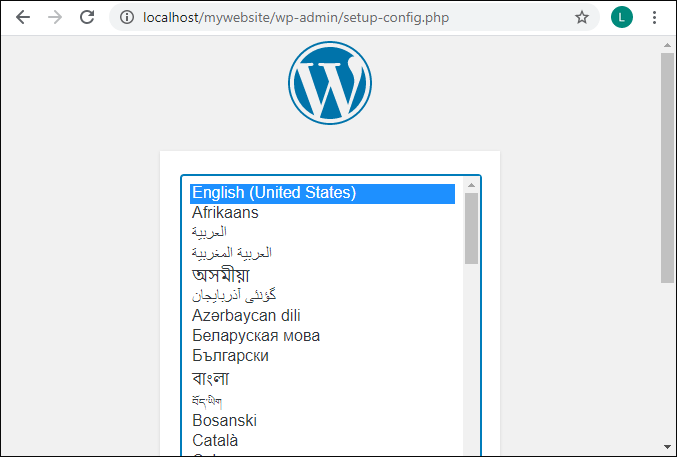
- #Root path in xampp install wordpress install
- #Root path in xampp install wordpress zip file
- #Root path in xampp install wordpress full
- #Root path in xampp install wordpress password
With a localhost site, you will be able to test your themes, plugins, and codes as much as you want.
#Root path in xampp install wordpress install
Then, you’ll have your own test bed for trying out both blogging tools, experimenting with styles, and trying out new releases.Are you searching for a way to install WordPress on Localhost? Well, it’s a very easy process. Not including download time, setting everything up should take about an hour.
Finally, open up the local Movable Type install page and follow the steps to complete the setup. In the folder `c:\xampp\cgi-bin\mt4`, edit all the *.cgi files and change the first line to: `#!c:\xampp\perl\bin\perl.exe`. #Root path in xampp install wordpress password
Select Privileges tab and create a user `movabletype` and password of your choice, allowing all privileges for the `movabletype` database. Select Databases and create a database named `movabletype` with encoding `utf8_unicode_ci`. From the location `c:\xampp\cgi-bin\mt4`, move the entire `mt-static` folder to `c:\xampp\htdocs`. Extract the files to `c:\xampp\cgi-bin`, making sure to use the folder names inside the zip then, rename the default folder (like “MT-4.0-beta…”) to just “mt4” (if done correctly, you should have a file `c:\xampp\cgi-bin\mt4\mt.cgi`). Visit the Movable Type 4 page and download the latest beta in Zip format. I used these steps to install the new MT 4 Beta 3: 
Now we’ll install Movable Type and see how it compares to WP. (Credit to Tamba 2 for the WordPress steps.)
Finally, open the local WordPress install page and follow the steps to complete the setup. With a text editor, open file `c:\xampp\htdocs\wordpress\wp-config-sample.php` edit the file to set DB_NAME to `wordpress`, DB_USER to `wordpress`, and DB_PASSWORD you chose above save the file in the same location but named `wp-config.php`. Select Privileges tab and create a user `wordpress` and password of your choice, allowing all privileges for the `wordpress` database. Select Databases and create a database named `wordpress` with encoding `utf8_unicode_ci`. Open the local phpMyAdmin page and login using updated root password you set earlier. #Root path in xampp install wordpress zip file
Extract the files to c:\xampp\htdocs, making sure to use the folder names inside the Zip file (if done correctly, you should have a file `c:\xampp\htdocs\wordpress\index.php`). Visit the WordPress download page and download WP in Zip format. Now that we have our base system, getting WordPress running locally is pretty straightforward. #Root path in xampp install wordpress full
I’m only using this for testing, so I don’t need them to be running full time. You can choose to run Apache and MySQL as Windows services, but I prefer to start and stop them through the XAMPP control panel.
Read the XAMPP instructions for changing the MySQL root passwordĪt this point you should have a working installation of Apache with MySQL, PHP, and Perl. Run the XAMPP Control Panel and start both Apache and MySQL. Install Perl add-on, choosing default options. Install XAMPP, choosing default options and location c:\xampp. Start at the XAMPP for Windows project page and download XAMPP for Windows (basic package) and the Perl add-on. After that, they’ll be up and running in a few minutes with these steps: The XAMPP packages are pretty big (about 100MB for the combination I chose), but downloading is the slowest part. I’m using it on Windows XP and used the instructions that follow to set everything up. 
Since it’s on your own Windows box, you can play around with configuration, templates, styles, and so on.

Once XAMPP is installed, your test bed is ready for applications like WordPress and Movable Type. But, if you want to play with these tools locally, there’s a great package call XAMPP – “…an easy to install Apache distribution containing MySQL, PHP and Perl.” Both are available in downloadable, install-it-yourself versions that can be uploaded to typical web hosting accounts that support Apache, MySQL, PHP and Perl. Both Movable Type and WordPress are powerful, flexible blogging engines.







 0 kommentar(er)
0 kommentar(er)
